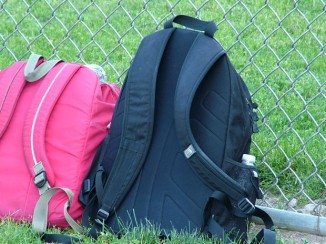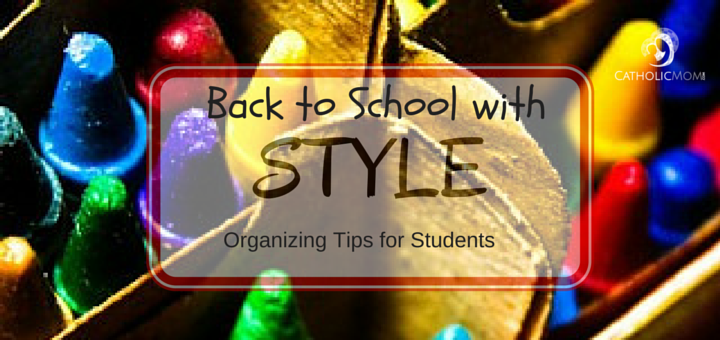Back when I was an elementary school counselor, I taught classroom lessons on topics like friendship, feelings and problem-solving. One day, I walked into a classroom prepared to teach a lesson on dealing with bullies. Book in hand, I got about three steps into the classroom when I saw an adult with some clout (who shall remain unidentified) standing at a child’s desk, removing “lost” papers and triumphantly sharing her findings with the classroom teacher. The owner of the desk, a cute young lady whom I knew to be a kind and intelligent person, cringed. Inwardly, so did I.
The adult didn’t mean to humiliate the child — just the opposite. She meant to be helpful. Organization came easily to the adult. She didn’t understand the crumpled-papers-and-haphazardly-stashed-books system that was this child’s way of managing her materials. The adult wanted to help the student find what she needed, show her how to “fix” her desk and solve the problem. Instead, if the look on the child’s face was any indication, the only thing the well-meaning adult succeeded in doing was making the child feel embarrassed and ashamed.
Kids who struggle with organization are very familiar with these feelings. Often funny, kind, smart, creative and talented, they know they look like Pigpen from the Charlie Brown comic strip. And they don’t understand why they can do all the things they can do, yet not manage to get their papers into the pockets of a folder or remember to bring their homework back to school.
Usually, they’re using the wrong tools. When the tools complement a child’s personal and organizational styles, organization is much less of a hassle. Like anything else with human beings, it’s not perfect. But it’s better.
 freepik.com
freepik.com
So today, let’s dig in and identify some styles. With your child in mind, decide if each of the items below is true or false. (In the interest of fairness, I’ve alternated between “she” and “he”).
- Your child participates in so many activities that she has something to do nearly every night.
- The only way your child remembers to bring things with him is if he leaves them out where he’s likely to trip over them.
- Your child’s closets are filled with things she no longer uses and/or clothes she no longer wears, but can’t get rid of.
- Your child’s room looks neat, yet he has trouble finding what he needs when he needs it.
- Your child’s papers -- even the important ones -- are often wrinkled and/or torn.
- The flat surfaces in your child’s room tell the story of where she’s been and what she’s done in the last 24 hours.
- When given a pocket folder or three-ring binder, your child may tuck (or stuff) his papers inside, but he usually disregards the pockets or the rings.
- Your child can often find lost items by retracing her steps.
- Your child often feels bored when he has unscheduled time.
- Your child has more stuff than room to store it.
- Your child usually puts things away, but often forgets where she put them.
- Your child often forgets things if he doesn't write them down.
- Your child’s bookshelves house:
a. anything and everything, as long as it fits.
b. overlapping sets of “collections.”
c. books in various stages of completion, stacked so that the titles are visible.
d. sports gear, sheet music or art supplies, but no books.
e. piles of items, with a telltale trail from the door to the bookcase.
All finished? Now let’s compare your answers to the key below. Every “true"clue:
- Item #1 is true for I love to be busy.
- Item #2 is true for I need to see it.
- Item #3 is true for I love stuff.
- Item #4 is true for I know I put it somewhere.
- Item #5 is true for cram and jam.
- Item #6 is true for drop and run.
- Item #7 is true for cram and jam.
- Item #8 is true for drop and run.
- Item #9 is true for I love to be busy.
- Item #10 is true for I love stuff.
- Item # 11 is true for I need to see it and I know I put it somewhere.
- Item #12: I need to see it organizers are likely to do this.
- Item #13a: Cram and jam or I know I put it somewhere; 13b: I love stuff; 13c: I need to see it; 13d: I love to be busy; 13e: Drop and run
How'd you do? Do the quiz answers match your predictions and observations? For most people, clear patterns will emerge, and the answers will come as no surprise. Even without further explanation (which will come in future posts), the names make sense based on what we've seen our kids do automatically.
No clear patterns? At this point in the process, that's not unusual. Further observation, discussion and exploration will help you and your child to determine predominant styles. And some kids really are a mix of styles, but this can be a benefit. An overlap can mean more strategies to work with!
 Photo credit:
DuBoix via Morguefile
Photo credit:
DuBoix via Morguefile
The most important thing to keep in mind right now is that there are no right or wrong answers on the quiz and that these styles are not personal or organizational flaws. Up to this point, the styles have been stumbling blocks. Moving forward, the goal will be to help your child see his or her natural tendencies as assets. That way, they can be used as the building blocks of a workable, sustainable plan.
Next week, we'll look at styles in action when kid meets backpack.
See all our Back to School with STYLE posts.
Copyright 2015 Lisa Hess
Logo background image: "Unageek color" by Unageek (2013) via Morguefile. Text added in Canva.
About the Author

Lisa Hess
Transplanted Jersey girl Lisa Lawmaster Hess is the author of a blog compilation, three novels, and three non-fiction books, including the award-winning Know Thyself: The Imperfectionist’s Guide to Sorting Your Stuff. A retired elementary school counselor, Lisa is an adjunct professor of psychology at York College of Pennsylvania. She blogs at The Porch Swing Chronicles, Organizing by STYLE, and here at Catholicmom.com. Read all articles by Lisa Hess.



.png?width=1806&height=731&name=CatholicMom_hcfm_logo1_pos_871c_2728c%20(002).png)
Comments